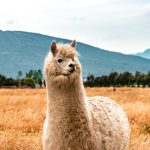
Introduction
The wildlife sector comprises 3 sub-sectors: wildlife ranching, wildlife activities, wildlife products.
a) Wildlife ranching:
The primary activities:
- breeding
- live sale of animals.
Secondary contributors:
- Live captures
- Translocation Services
- Veterinary Services
- Fencing and maintenance
b) Wildlife activities
Primary activities:
- Wildlife Viewing
- Trophy Hunting
- Biltong Hunting
Secondary contributors:
- Accommodation
- Transport
- Equipment & Supplies (Arms, Ammunition etc.)
- Taxidermy
c) Wildlife products
Primary activities:
- Game Meat Processing
- Skin and Hide Production
- Other products (e.g. curios and decorations)
Secondary contributors:
- Packaging and Transportation
Commercial/private wildlife ranches cover 16.8% of the country’s landmass, covering approximately 20,5 million hectares. Limpopo has 50% of these ranches, the Northern Cape 20% and the Eastern Cape 12%. Wildlife ranching employs more than 100 000 people and generates income of R9.1 billion per year (0,27% of GDP)
Source: 2018 Biodoversity Economy (Wildlife) presentation by Mr Shonisani Munzhedzi of the then Department of Environmental Affairs (DEA).
Contents
Acknowledging the contribution of the South African wildlife industry
When conditional private ownership of wildlife was granted in 1991, many livestock producers switched to extensive wildlife production. On the back of the economic and ecological advantages of extensive wildlife production, the industry experienced an average annual growth rate of 5.6% up to the mid-2000s. However, an increase in intensive breeding practices, especially of high-value animals since the mid-2000s, resulted in a further acceleration at a growth rate of 6.75% per annum. As a result, the wildlife industry is the fastest growing agricultural sector in South Africa, with over 10 000 game ranches using in excess of 17% of the total land area. This industry is globally recognized, resting on several consumable and non-consumable pillars (i.e. recreational hunting, trophy or biltong hunting, venison production, live game trade and eco-tourism), with hunting and eco-tourism being the main contributors towards the economy of this industry.
Despite the growth and transformation experienced within the industry, several discussions remain with regard to the current, or potential, contribution of the wildlife industry towards overall economy growth, poverty reduction and ensuring food security. It is often argued that the expansion of the wildlife sector has taken productive land out of the system, causing higher levels of food insecurity and poverty. In disparity to this view, it can be argued that the wildlife industry is making a significantly contribution towards the economy by adding significant value to wildlife, by creating considerable skilled and semi-skilled employment opportunities, and by providing an alternative food production system.
Moreover, benefits from growth within the wildlife industry stretches beyond the economic scope as the sector also contributes towards conservation and wildlife management. South Africa is one of the few countries in the world where the number of animals of rare or threatened species has increased in recent years. Native wildlife numbers are at its highest since the past 100 years.
The growth of the wildlife industry may be hampered due to the present speculative market dynamics as well as several proposed changes in legislation. These have created uncertainties and apprehensiveness about the direction and sustainability of the sector. This will subsequently impact its socio-economic contribution as long-term and structural investments are put on hold.
It still remains very difficult to estimate the impact of these dynamics without reliable data; which is one of the largest backdrops of the South African wildlife industry. Therefore, to ensure the sustainability and viability of the wildlife industry, adequate information systems are a necessity. The Agricultural Economists at the Unit for Environmental Sciences and Management of the North-West University are directly involved with the sector; conducting data collection and research in order to maintain a comprehensive information system for the wildlife industry.
Source: Dr PC Cloete
Local business environment
Game ranching in South Africa is unique, not only in terms of species diversity, but also in terms of our institutional environment, i.e. South Africa is one of only a few countries in the world where ownership of wildlife is vested in private landowners, which presents game ranchers with a comparative advantage second to none – there is no reason why game ranching cannot become or remain one of the leading agricultural land use options in years to come. Dr Flippie Cloete
Five pillars of the wildlife ranching are breeding, hunting, products, tourism and mixed farming.
Five methods are used in South Africa for trading with wildlife, namely:
- Private sales negotiated between the buyer and the seller (Professional wildlife catchers play an important role by translocating the animals)
- Public live wildlife auctions
- Public wildlife catalogue auctions
- The tender system (This method is used mainly by municipalities that own wildlife and nature reserves. The SANParks calls for tenders to buy animals like elephants and rhinoceros)
- Electronic auctions
Further reading:
See also the items under “Websites & publications” heading.
- Find the many presentations at www.wrsa.co.za, website of Wildlife Ranching SA (WRSA). These include Protocol for the handling of trophy animals/meat and Developing wildlife tourism as part of a sustainable wildlife industry.
For the newcomer
To develop a wildlife ranch or convert a livestock farm into a wildlife ranch requires major capital investments in fencing, stocking and other infrastructure.
- To fence a property for wildlife ranching is very expensive. The height of the fences will be 1.2 m, 1.8 m or 2.4 m depending on the type of wildlife kept.
- Once a property is fenced in terms of the minimum standards required by Nature Conservation, an exemption certificate is issued that is valid for a period of three years. This allows the holder or owner to hunt, capture and sell particular species of wild animals all year round on the exempted property. Without an exemption certificate hunting is restricted to the hunting season, from March to September.
- The cost of stocking a property with wildlife may also be regarded as an inhibiting factor. The rare species are animals that were almost extinct three decades ago. They have been bred at such a rate that there is currently no fear that they will become extinct. These animals are now available at high prices which are determined by the market. The expectations of sellers are also high, with the result that they prefer to keep the animals rather than sell them at lower prices. The numbers of these animals are therefore steadily increasing.
- If the wildlife rancher wants to expand into accommodation, infrastructure developments to provide this service also require a major capital outlay. The conservation of the local environment as outlined in the Conservation of Agricultural Resources Act guards against the movement of wildlife to unsuitable habitats. One of the main inhibiting factors in South African wildlife management is demarcated areas. This regulation means that wildlife ranchers are prohibited from keeping particular wildlife species in specific areas because these areas are not regarded as natural habitats for those species.
Source: Deon Furstenburg
Find the Munzhedzi Biodiversity Economy (Wildlife ) presentation (2018). Read about the Wildlife Economy Lab which developed detailed plans for 15 initiatives and a further 6 recommendations. These began with (1) Identifying and prioritising 10 million ha for transformation of wildlife economy (2) Co-ordinating existing support mechanisms under a ‘Wildlife Support Unit’ to efficiently support new entrants. Refer to slide 21 for full list. The presentation also tracks the progress on these initiatives (see from slide 27).
National strategy and government departments
Find information at www.wrsa.co.za on legislation, permits etc.
South Africa is a major exporter of wildlife products. The significant and growing wildlife industry contributes approximately R3 billion to the country’s Gross Domestic Product (GDP) and supports over 65 000 permanent jobs (WWF, 2019).
The Threatened and Protected Species (TOPS) Regulations of NEMBA (National Environmental Management Biodiversity Act) regulate the movement, ownership and trade of certain listed species, while international trade is governed by CITES.
The Game Meat Strategy for South Africa was published in the Government Gazette No.49620 for implementation after being approved by Cabinet in September 2023. It seeks to strengthen the game meat sector (i) as a provider of food security, and (ii) as an economic growth sector that can help create job opportunities (SA News, 2023).
- Department of Agriculture, Land Reform and Rural Development (DALRRD) Directorate: Animal Production www.dalrrd.gov.za In terms of game ranching, game is considered to be an agricultural product as defined in the Marketing of Agricultural Products Act, 1996 (Act 47 of 1996). Find the “Veld, Forage And Wildlife Ranching Division” option on the directorate’s web pages.
- Whereas DALRRD heads up agricultural production (including wildlife husbandry), the Department of Forestry, Fisheries and the Environment (DFFE) leads environmental conservation. Visit www.dffe.gov.za. Its Biodiversity Economy Strategy of 2018 included game ranching activities with its sale, breeding and hunting of wildlife as well as the services and goods required to support the value chain, e.g. butcheries, taxidermy, hunting equipment etc.
- The Department of Tourism has to create a climate for the strengthening of South Africa as a globally desired hunting destination by facilitating, inter alia, responsible and ethical hunting operations. See www.tourism.gov.za.
- The Department of Trade, Industry and Competition (the dtic) has as its prime responsibility the enhancement of international trade. Visit www.thedtic.gov.za. Find contact details for all government departments through the website www.gov.za.
- South African Bureau of Standards (SABS) The Game Standard SANS 10331, obtainable from SABS, covers aspects of the translocation, such as the capture, transportation, temporary accommodation and release, of wild herbivores such as antelope, elephant, rhino, hippo, giraffe and zebra. SANS 10391 covers the translocation of wildlife by sea. Visit https://store.sabs.co.za.
Role players
Websites and publications
Visit the websites listed earlier on this page.
- The WRSA puts out a magazine, Private Game, for the game farmer. See www.facebook.com/privategamemag/ or contact WRSA for copies.
- The magazine Game & Hunt is an independent monthly publication aimed at promoting the sustainable utilisation of South Africa’s wildlife. Game & Hunt serves the entire spectrum of the game industry, including game ranchers, hunters and nature lovers. Visit https://wildenjag.tv.
- SA Journal of Wildlife Research – www.sawma.co.za. Contact Mrs Elma Marais at 021 554 1297 or elma [at] mweb.co.za.
- Game Ranch Profitability in South Africa, the culmination of research done by PC Cloete, P van der Merwe and M Saayman (North-West University) on behalf of ABSA Bank.
- The following publications are available from www.amazon.com and www.kalahari.com: (i) Bothma, J. & Du Toit, J.G. (eds.). 2016. Game Ranch Management. 6th ed. Pretoria: Van Schaik. (ii) Bothma, J. & van Rooyen, N. (Eds.). 2005. Intensive Wildlife Production in southern Africa. Pretoria: Van Schaik.
- Visit www.kejafa.com for game publications stocked by Kejafa Knowledge Works. These include: (i) Oberem, P. & Oberem, P. 2016. The New Game Ranger. Pretoria: Briza. (ii) Bothma, J. 2006. Wildplaasbestuur. 4th ed. Pretoria: Van Schaik.
- Call 012 842 4017 or send an email to stoltze [at] arc.agric.za for the following publication, available from the ARC Agricultural Engineering: Norms for modern game handling facilities (also available in Afrikaans).
- Van der Merwe, P. & du Plessis, L. (eds). 2014. Game Farm and Hunting Tourism. Stellenbosch: SUN Press.
- Fair Game? Improving the Regulation of the Well-being of South African Wildlife is a report published by the Centre for Environmental Rights (CER) and the Endangered Wildlife Trust (EWT) which reviews the regulation of the welfare of wild animals in South Africa. Find it at https://cer.org.za/wp-content/uploads/2018/06/CER-Wildlife-Welfare-Brochure-web-2018.pdf
- Find the Endangered Wildlife Trust report (2016), An assessment of the economic, social and conservation value of the wildlife rancjing industry and its potential to support the Green Economy in South Africa under “Scientific papers” at www.ewt.org.za.
- Van der Merwe, P. and M. Saayman. 2003. Determining the economic value of game farm tourism. Koedoe 46(2): 103–112. Available at www.koedoe.co.za/index.php/koedoe/article/download/59/59
- Prof Jane Carruthers www.janecarruthers.co.za Environmental history is one of Prof Carruthers’ specialities. Publications/presentations include Wilding the Farm or Farming the Wild which traces how farming with game has evolved from the 1960s until the present day.
- MacKenzie, A. 1993. The Capture and Care Manual: Capture, Care, Accommodation, and Transportation of Wild African Animals. Pretoria: Wildlife Decision Support Services and the South African Veterinary Foundation.
- Find the Nation in Conversation overview of the wildlife industry (March 2017) on YouTube at www.youtube.com/watch?v=9gMwK-e0Qms
- Various post-graduate dissertations at University libraries.
- The Info Pak (booklet) “Diseases shared by Wildlife and Livestock,” available from the ARC-OV and DALRRD, explores links between the various animals and diseases like African swine fever and corridor disease. Find the publication at www.dalrrd.gov.za.
- The International Wildlife Ranching Symposium – http://iwrs.co.za
- International Council for Game and Wildlife Conservation – www.cic-wildlife.org
- Environmental Investigation Agency (EIA) https://eia-international.org Wildlife trade maps
- www.ifaw.org – International Fund for Animal Welfare
- www.stoprhinopoaching.com – updates on the rhino poaching epidemic
Some articles
- Read the Agribook blogs “South Africa’s wildlife ranches can offer solutions to Africa’s growing conservation challenges” and “When decisions are placed in the hands of people who pay no price for being wrong” about South African John Hume, “The Man Who Bred 1000 Rhino”.
- Reporter. 2023, November 12. “Creecy publishes Game Meat Strategy for SA”. SA News. Available at www.sanews.gov.za/south-africa/creecy-publishes-game-meat-strategy-sa
- Reporter. 2023, September 28. “Cabinet approves revised game meat strategy for South Africa”. SA News. Available at www.sanews.gov.za/south-africa/cabinet-approves-revised-game-meat-strategy-south-africa
- Gilchrist J. 2023, September 22. “Farmed rhinos will soon ‘rewild’ the African savanna”. The Conversation. Available at https://theconversation.com/farmed-rhinos-will-soon-rewild-the-african-savanna-213932
- AFP. 2023, April 25. “John Hume seeks billionaire as rhino farm worth millions to be auctioned off”. Eye Witness News. Available at https://ewn.co.za/2023/04/25/john-hume-seeks-billionaire-as-rhino-farm-worth-millions-to-be-auctioned-off
- Find the “Game & wildlife” option at the Farmer’s Weekly website, www.farmersweekly.co.za/animals/game-and-wildlife/.
- Find the “Wild” option under “Bedrywe” at the Landbouweekblad website, www.landbou.com.
- Le Roux K. 2022, June 7. “Nothing wrong with transacting in cash – Wildlife Ranching South Africa”. 702. Available at www.702.co.za/articles/446760/nothing-wrong-with-transacting-in-cash-wildlife-ranching-south-africa
- Mokwena T. 2022, July 4. “Cabinet approves SA’s first draft Game Meat Strategy for public comment”. Eye Witness News. Available at https://ewn.co.za/2022/07/04/cabinet-approves-sa-s-first-draft-game-meat-strategy-for-public-comment
- Reuter. 2020, August 19. “SA game reserve turns to meat sales to survive pandemic”. Eye Witness News. Available at https://ewn.co.za/2020/08/19/south-african-game-reserve-turns-to-meat-sales-to-survive-pandemic
- Carnie T. 2020, January 29. “South Africa: wild animals at risk of ‘genetic pollution'”. The Guardian. Available at www.theguardian.com/environment/2020/jan/29/south-africa-wild-animals-at-risk-of-genetic-pollution
- Reporter. 2017, November 3. “WRSA Eastern Cape: Keeping an eye on growth potential”. Agri Orbit. Available at https://agriorbit.com/wrsa-eastern-cape-keeping-eye-growth-potential/
- Hart, A. 2017, August 22. “Thousands of former cattle ranches are now profitable game farms”. Business Report. Available at www.iol.co.za/business-report/opinion-thousands-of-former-cattle-ranches-are-now-profitable-game-farms-10881232
- Uys G. 2017, March 27. “Is rhino breeding a potential gold mine for cattle farmers?” Farmer’s Weekly. Available at www.farmersweekly.co.za/animals/game-and-wildlife/is-rhino-breeding-a-potential-gold-mine-for-cattle-farmers/
- Oberem, P. 2015, October 22. “Wildlife ranching in South Africa”. Africa Geographic. Available at https://africageographic.com/blog/wildlife-ranching-in-south-africa/



Share this article







